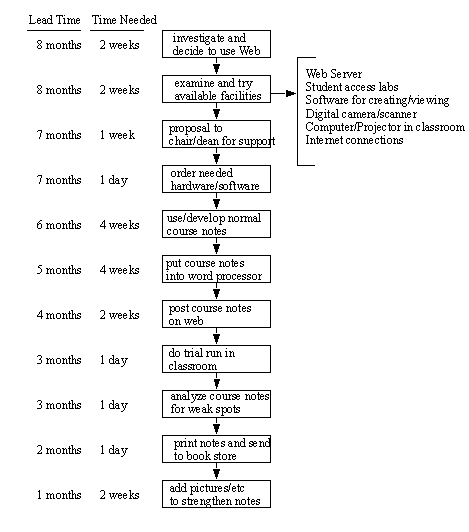1. TEACHING WITH THE INTERNET• The impact that web based material has on the students is, - easy access to course note correction and additions. - easy access to ‘bulletin-board’ type information. - students can add their own assignments to the course notes. - software and application specific files can be easily downloaded by the students. - the students can have a copy of the lecture material, and so the lecture focus shifts from dictation, to discussion of the course content. - homework can be submitted and returned without leaving home. • In general the students strongly favor the Web based approach, although there are a number of problems that face some of them, - different levels of computer support. Some students have no Internet access from home. - access problems in campus computer labs. - the learning curve - this is quickly decreasing. • There are some strong benefits for the faculty member who plans to use the Web for course materials, - the preparation before each lecture is decreased. - each lecture can be more consistent, if the web pages are used for presentation. - software and files are easy to distribute. - paperless marking can be done by having students upload files to their accounts. The instructor can then download these files and use software (e.g. Word, Photoshop, MathCAD and Working Model) to mark and leave comments. These files are then uploaded to a private directory where the student can retrieve them. - homework submitted with software such as Mathcad forces students to be exact in their calculations. It makes it harder to be obtuse, verbose, or vague. - notices can be posted on the web, saving trips to a designated board. - individual students can be reached with email. - changes in the course notes can be easily distributed. - students can post their work publicly and compare to others. • There are some additional demands placed on the instructor, - before the course is offered the first time the instructor must spend a large amount of time developing solid course materials. - support is needed from the department/faculty to provide needed release time and equipment support. - mistakes on-line can become very public. - the course may become less flexible after the beginning of the term. • You can start small by developing materials for part of a course or a single lecture. • Before the course starts you will probably want to follow a time line like that shown below. 
• The approach to the lectures should generally follow the form below, 
• Strategies for success include, • Know the software and hardware. • Keep a bit of ‘MTV’ style in mind. Videos, sounds and other moving things help. • Do a ‘dress rehearsal’ well before the first class - small details such as fonts can ruin all the other efforts. Ask somebody to sit through a short trial run. • Try to make computer use unavoidable for some aspects - If not some students will ‘get it from their friends’ and you never get good contact. • Provide a good tutorial guide for all software students use, and offer assistance when possible. • Try to avoid commiserating with students when they have software problems. They need your confidence. If necessary find the answer and get back to them. • Get full administrative support. • Give the students something to do during the class - discussions or drill problems. • Turn on the lights and solve problems on the board frequently, it will wake up students going to sleep in the dark. 1.1 LECTURES1.2 ON-LINE NOTES1.3 ON-LINE MARKING1.4 The Time-Line For My First On-Line Course (Fall 1996) |